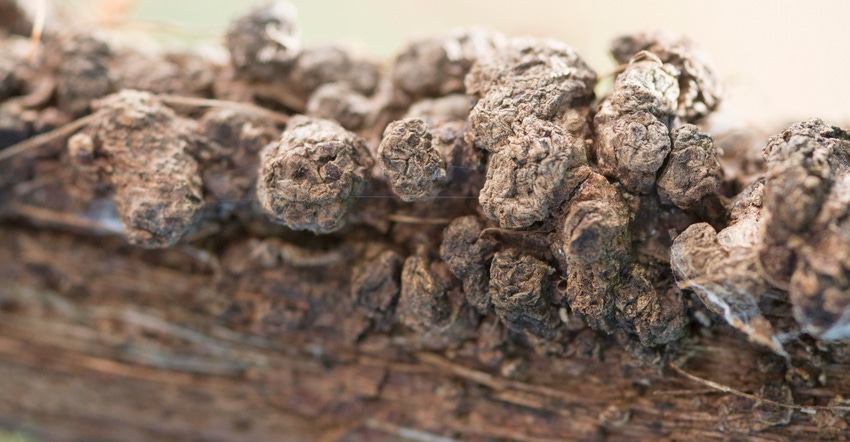July 20, 2017

There's a bacteria in soil that has been an important building block for research in genetic engineered crops called Agrobacterium tumifaciens. The bacterium has the unique ability to alter the genetic makeup of a plant, creating a cancer-like tumor called a gall. Used in biotech research, specially modified bacteria modify genes by bringing in desired traits. But in the wild, Agrobacterium tumifaciens' ability to alter a plant's genetics causes the costly— and much hated — crown gall disease.
This is an incurable disease that can affect a wide range of plants, including many of economic importance out West, including in Oregon. And in Oregon, researchers have taken a major step toward developing an on-site detection tool for finding the disease in soil.
The researchers from Oregon State University developed molecular tools to work with commercially available kits that would allow a user to quickly and effectively test plants for the disease using a dipstick that reveals the presence of the disease within minutes. Traditional methods of detection for the bacterium take several hours using specialized equipment.
Their findings were published in the journal Phytopathology, and OSU has filed a patent for the molecular tools.
Technology to help state ag economy
In its release about the new testing discovery, OSU noted that the greenhouse and nursery, fruit and nut, and winegrape industries total $41.75 billion in economic activity in the state annually. Early and rapid detection of the bacteria is key to management of crown gall, because there is no cure for the disease. Jeff Chang, associate professor, and Elizabeth Savory, a postdoctoral researcher in OSU's College of Agricultural Sciences, coauthored the study.
Noted Chang: "Growers can't predict when [crown gall] will strike, and once it has, the disease cannot be cured because the plant is permanently genetically modified and will form the tumors. These growths can be lethal to young plants, and they are also grotesque — so they compromise the aesthetic value of these plants. Nurseries typically go through extreme protocols to keep their sites clean, but once infection occurs, the only solution is to throw away diseased plants and clean up the site."
Agrobacterium species penetrate plants through fresh wounds, which can be caused by pruning, cultivating, chewing insects, or often by freezing.
When the bacteria infect, they genetically modify plants, Chang said. A fragment of their DNA is clipped and transferred into the plant. Once inside, the DNA fragment integrates into the genome of the plant and brings in genes that cause the galls, and the transformed plant cells, to make a unique food source for the bacteria.
Skylar Fuller, a recent OSU graduate, designed the detection mechanism under the mentorship of the study's coauthors. Collaborators included Alexandra Weisberg, a postdoctoral fellow, and Melodie Putnam, director of the OSU Plant Clinic, as well as their students. The gene sequences the team used were variations of those originally developed by Walt Ream, an OSU professor.
The study was funded by the USDA's National Institute of Food and Agriculture, and Fuller was supported by OSU’s Department of Botany and Plant Pathology.
Source: Oregon State University
You May Also Like




